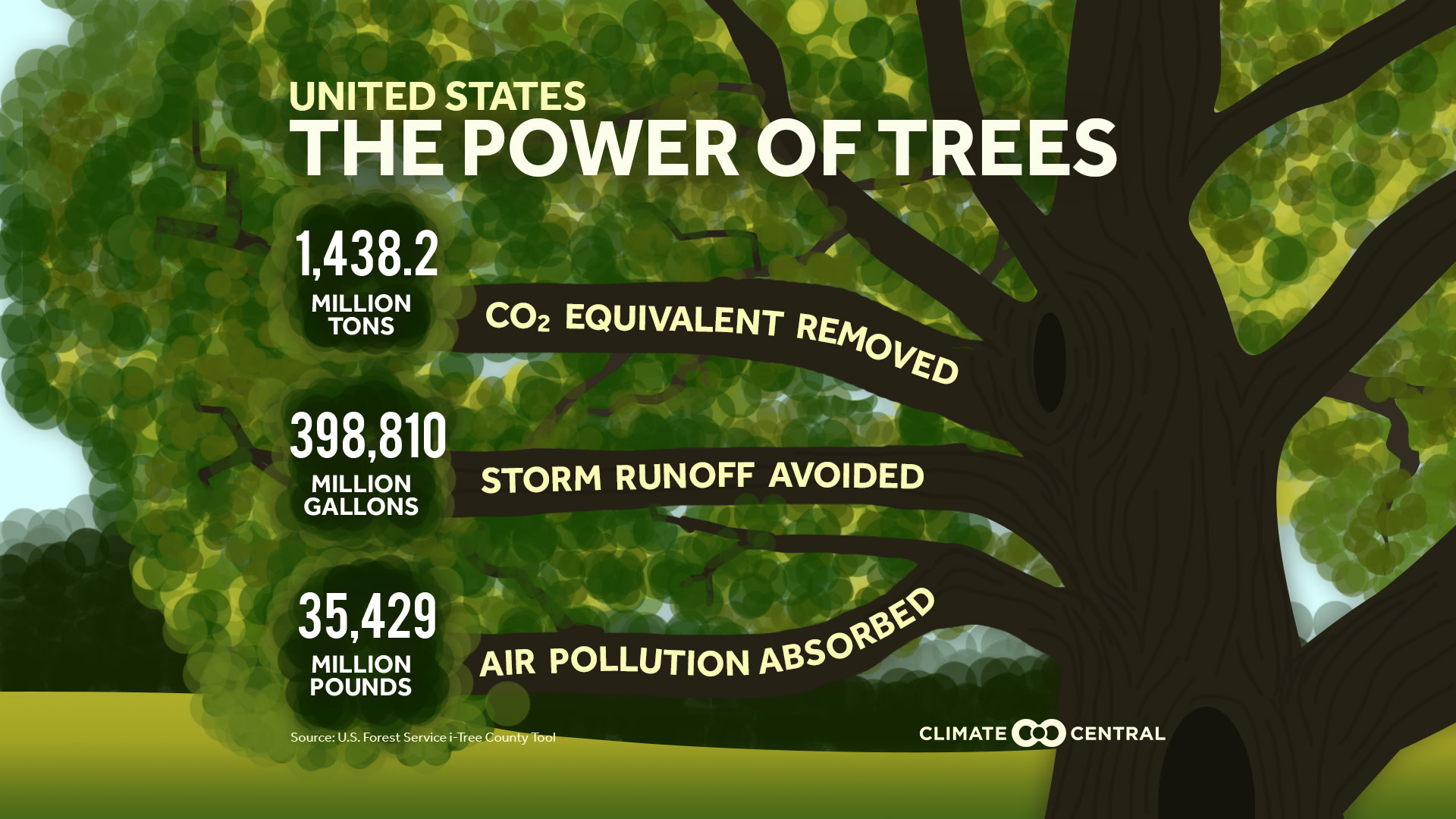With fall foliage at its finest this month, it’s a popular time to celebrate trees. This week, we’re branching out beyond their vibrant colors to explore how trees benefit our climate and health.
To quantify these benefits, we turn to the U.S. Forest Service, which has developed a series of free tools that measure the impact of trees on many scales. Building on their county-level data, we show how trees in your area offset carbon emissions, reduce flood risks, and improve air quality.
Trees curb climate change directly by removing carbon dioxide from the atmosphere. Through the process of photosynthesis, forests offset 10 to 20 percent of the country’s greenhouse gas emissions each year. Additionally, trees help protect against climate impacts such as flooding, which is getting worse with more locally heavy precipitation. By catching rainwater, reducing erosion, and creating more permeable soils, trees help prevent nearly 400 billion gallons of runoff annually in the continental U.S., which is enough water to fill about 600,000 Olympic-sized swimming pools.
Trees are equally crucial for water and air quality, as over half of Americans depend on forests to capture and filter their drinking water. Tree leaves also absorb airborne pollutants and intercept particulate matter, helping reduce the throat irritation, asthma, and even premature death that these pollutants may cause. By annually removing over 35 billion pounds of these pollutants in the continental U.S., trees prevent over half a million cases of acute respiratory symptoms each year.
The following table shows the top five media markets for each of these benefits:
Not surprisingly, areas with more trees provide more benefits, like in the Southeast and Pacific Northwest. However, some benefits are higher in urban areas, which often have higher air pollution and flood risks. Trees in urban areas can also reduce the urban heat island effect and lower air conditioning needs as much as 30 percent by providing a natural shade. Urban trees reduce U.S. energy bills by over $5 billion each year. And since lower energy consumption means fewer carbon dioxide emissions, planting trees can contribute to a healthier planet while improving our daily lives.
Methodology: 2010 county-level data is taken from the U.S. Forest Service i-Tree County Tool (more details here) and aggregated into Nielsen Designated Market Areas (DMAs). For cities located within a larger DMA, the benefits shown are from the county in which the city is located. CO2 equivalent includes CO2 and other greenhouse gases based on their relative warming potential. Measured air pollutants include ground-level ozone, PM2.5, PM10, carbon monoxide, nitrogen dioxide, and sulfur dioxide.
